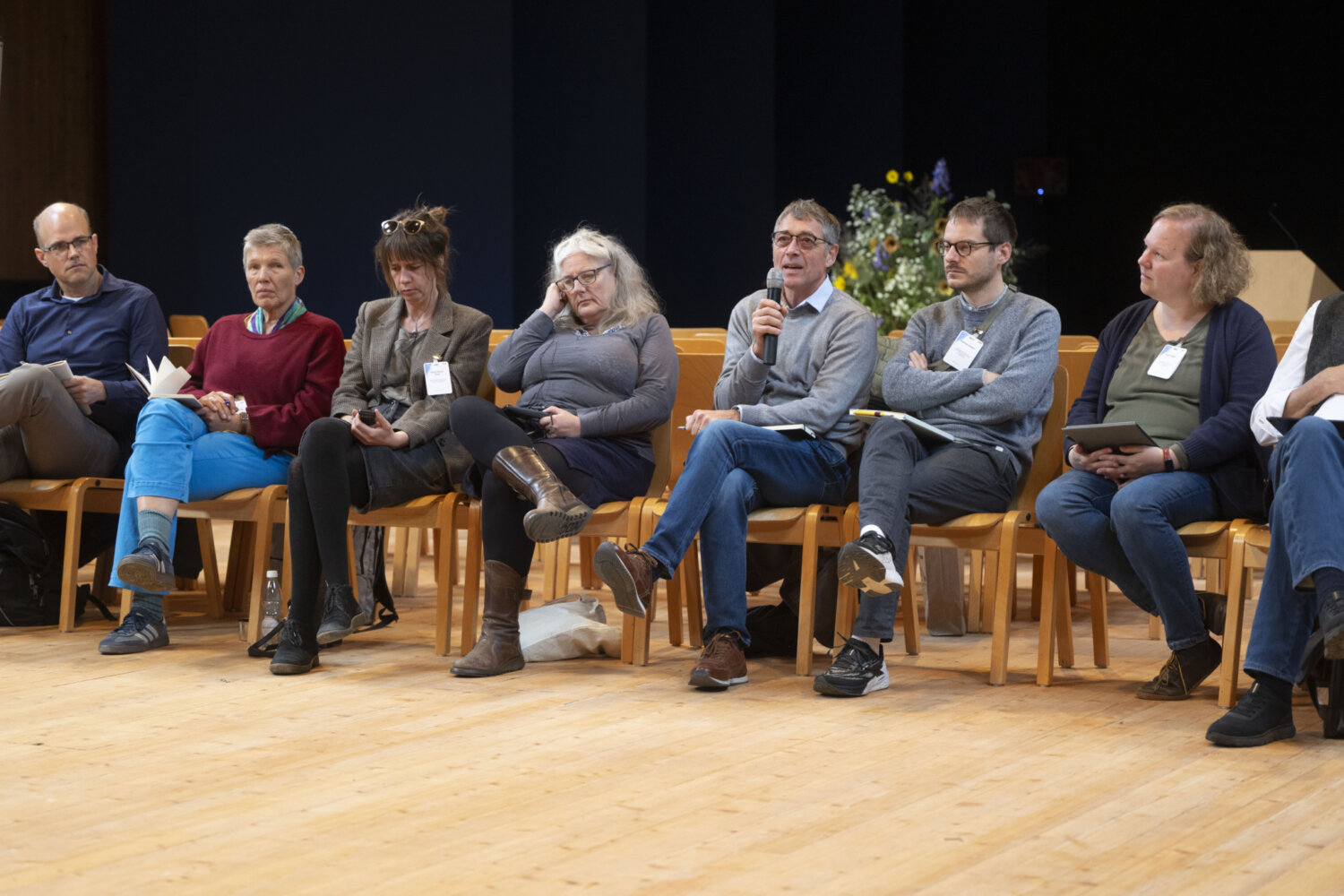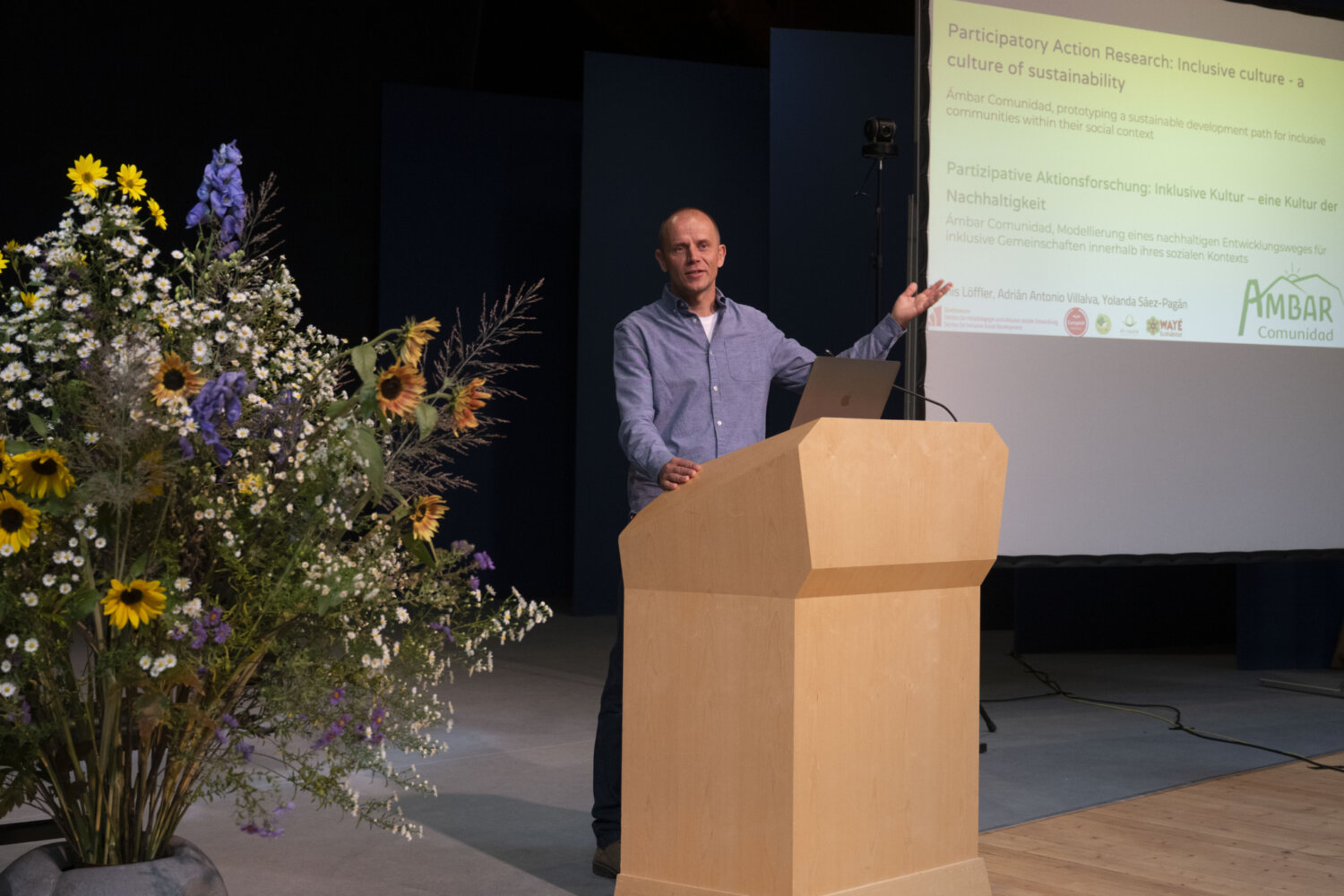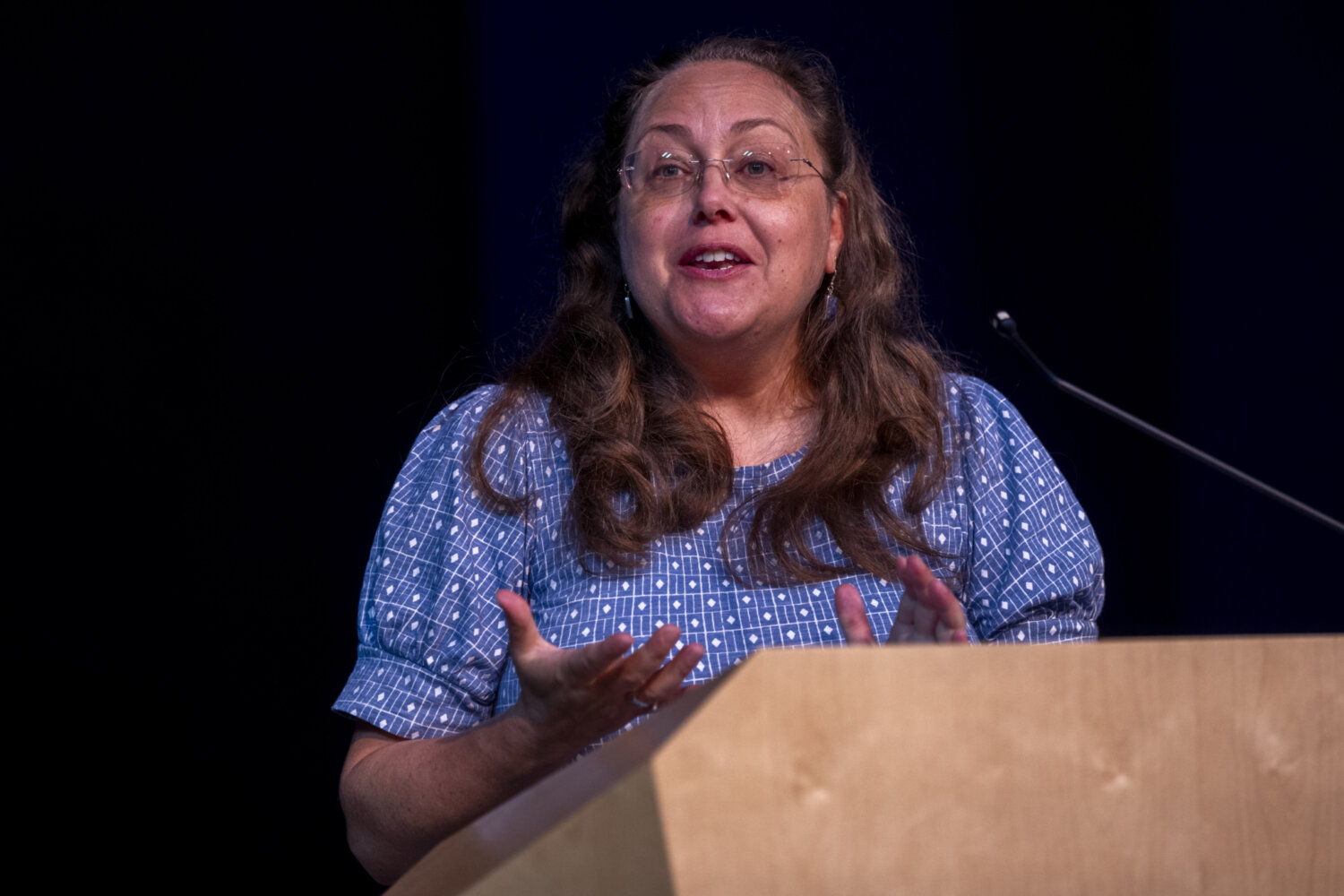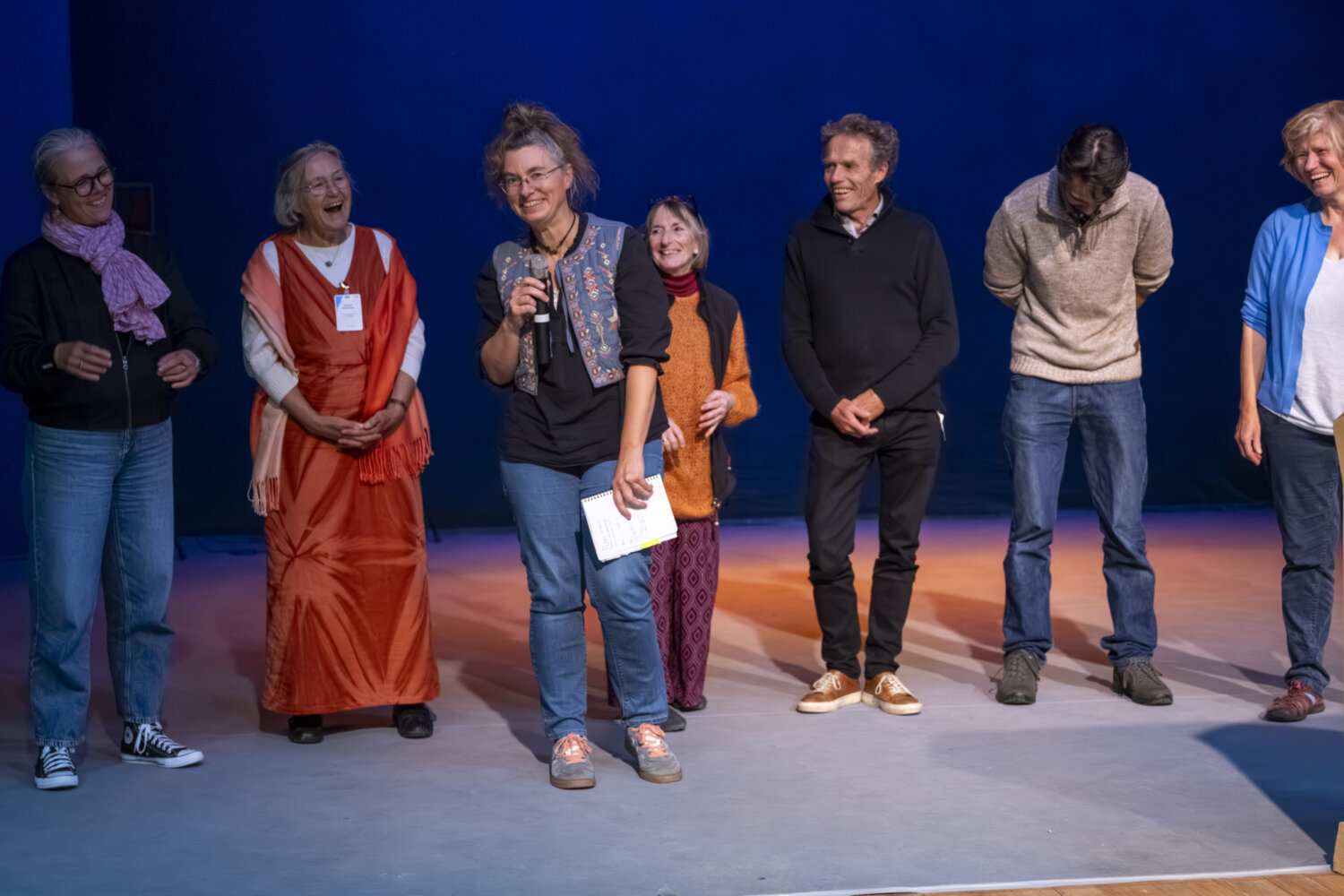Autumn Conference of the Section for Inclusive Social Development
From October 1 to 4, the so-called “small autumn conference” took place at the Goetheanum – in the intervening year between the large conferences.
Nevertheless, it was an international event, with over 100 participants from Mexico to Taiwan. It should also be added that the small conference is not explicitly inclusive in nature.
It is worth noting that the conference included a crossover, i.e., the crossing over to other sections I – personally found this very enriching!
On Wednesday evening, Karin Michael, head of the Medical Section, opened the conference with a keynote speech on the topic of WARMTH from a medical perspective. The incarnation of warmth from birth through the first three seven-year periods was particularly interesting, as was the realization that humanity is gradually cooling down. This is a phenomenon that occurs in every individual biography over the course of their life, but has also been proven to occur in humanity as a whole over the last 150 years. In short: warmth incarnates in childhood/youth and excarnates with increasing age – and: empathy increases with warmth!
On Thursday, the focus was entirely on two working groups of the Section: Supportive Education and Inclusion in Schools (moderated by Bart Vanmechelen, member of the Section’s leadership team) and Culture of Ageing and Care (moderated by Sonja Zausch, member of the Section’s leadership team).
I took part in a working group on culture of ageing, focusing on geriatric illnesses, led by Dagmar Fröder (Lebens- und Arbeitsgemeinschaft Lautenbach, Germany) and Elke Zech (Germany). Step by step, we participants explored the ageing process and the support needed, particularly in the early stages of dementia and ongoing care. We also discussed in depth the question of what needs to be promoted in old age. The theme of warmth emerged again as a connecting factor, i.e., adequately addressing and nurturing the dwindling warmth processes through all the elements of the aging person.
On Friday, Jan Göschel (Head of the Section) gave a presentation on the topic of research, making it clear that the Section places an emphasis on verifiable research, including in the social sphere. Research is Possible! Conservative research refers to objects that are measurable – but how does this work with living processes? Jan Göschel outlined a path from hermeneutics, contemplative science, and transdisciplinary research to participatory research – action research vs. laboratory research. Supported by contributions from Ulrike Barth and Christiane Drechsler from Alanus University (Germany), who conduct research in precisely these areas. And by then at the latest, the participants knew why the conference was not designed to be inclusive …
The rest of the day remained challenging, with four presentations from around the world (Argentina/Puerto Rico, Switzerland, USA) on research projects and their interim results. In the evening, the Section’s working groups presented their current status in a World Café, which will be presented in the afternoon forums at the upcoming 2026 conference.
Saturday began with a keynote speech by Bart Vanmechelen on the topic of the five Inner Development Goals. These were developed from the UN’s seventeen Sustainable Development Goals: a Swedish research group took this as an opportunity to conduct a global survey (independent of culture and religion) to determine what conditions these 17 goals required. The result comprises five thematic areas, known as the “Inner Development Goals,” which are not surprising at least to those working in social contexts: being, thinking, relating, collaborating, and acting. See also innerdevelopmentgoals.org
Here, a direct connection can be made to anthroposophy and the anthroposophical path of inner development offered by Rudolf Steiner.
Later in the morning there was another intersectional gathering: participants in the parallel conference of the Natural Science Section came together with those at our conference. Once again, the common theme was warmth. Two keynote speeches from each section, Astrid van Zon (NL) and Jacquelyn Bieringer (USA) for our section, and Vesna Forštnerič Lesjak and Matthias Rang (Heads of the Natural Science Section) wonderfully interwove the warmth in social relationships and that of the living earth organism. In particular, Vesna’s examples of the respective warmth relationships of higher developed plants, insects, and mammals, as well as Matthias’ question of the differentiation between Luciferic and Michaelic warmth, stuck with me – how can the latter be distinguished? Matthias gave us the image of boiling water: a parallel harmony of warmth up to the point where the water decides (or is forced) to change to a different state – it is probably the sacrifice that serves as the distinguishing feature.
In the afternoon, we continued working together in mixed working groups from both sections. We met according to the participants’ respective zodiac signs and prepared an essence of the conference. Now, finally, a small artistic aspect came up as well, with some zodiac groups deciding to use eurythmy for their presentation.
My conclusion: It was a truly inspiring conference, quite challenging and very enriching! Experiencing WARMTH holistically, whether as a human being or as an earthly organism. However, I did miss a small joint artistic start to the day (singing in the morning) or a little exercise in between, which was also a perception from the many informal conversations with participants. The joint exchange and networking throughout the entire time was of course also heartwarming, very important, and valuable.
So, a big thank you to the leadership team Jan Göschel, Bart Vanmechelen, and Sonja Zausch (in alphabetical order)!!!
Steffen Klepzig, Karl Schubert Communities, Stuttgart (DE)
Photos: Matthias Spalinger



















